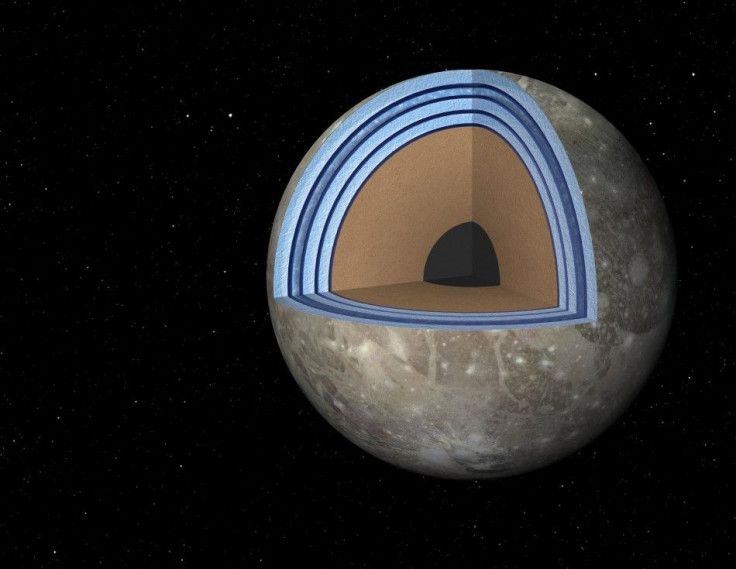NASA Scientists: Jupiter’s Moon Ganymede May Have Ice and Liquid Oceans, Largest Moon Can Support Life?

NASA scientists have recently announced the largest moon in outer space may have ice and liquid oceans "stacked up" in several layers like the popular club sandwich and apparently can support life.
"That would make it the largest club sandwich in the solar system," Steve Vance of NASA's Jet Propulsion Laboratory (JPL) in Pasadena, Calif., leading the study for the NASA-funded research, told Reuters in a telephone interview pertaining to Ganymede's layers of oceans.
"I suppose I'm also a fan of club sandwiches. My fiancée points out that I order them every time we go out to eat," Vance added.
According to a new NASA report, the study led by Vance has provided new "theoretical evidence" for the research team's club sandwich model, which was first proposed in 2013.
NASA added the results provided a possibility that the icy moon Ganymede must have harbored "primitive life."
"The 'club sandwich' findings suggest . . . the first layer on top of the rocky core might be salty water," NASA said, adding scientists say places where there is an interaction between water and rock are more likely to develop life.
"This is good news for Ganymede," Vance said in a statement.
"Its ocean is huge, with enormous pressures, so it was thought that dense ice had to form at the bottom of the ocean. When we added salts to our models, we came up with liquids dense enough to sink to the sea floor."
Basing on models of Ganymede, NASA cited scientists first suspected an ocean in the largest moon in outer space in the 1970s. In the 1990s, it was confirmed that there are oceans with evidence for "salty seas" in the icy moon through NASA's Galileo mission.
According to NASA, Ganymede is only one of five moons in the solar system thought to support vast oceans beneath icy crusts. For more information about the JPL mission, click here.
WATCH: Jupiter's "Club Sandwich" Moon
Source: YouTube/NASA Jet Propulsion Laboratory
MORE: NASA's Cassini Mission Detects Large Hidden Ocean inside Saturn's Moon Enceladus; A Possibility of Extraterrestrial Life





















